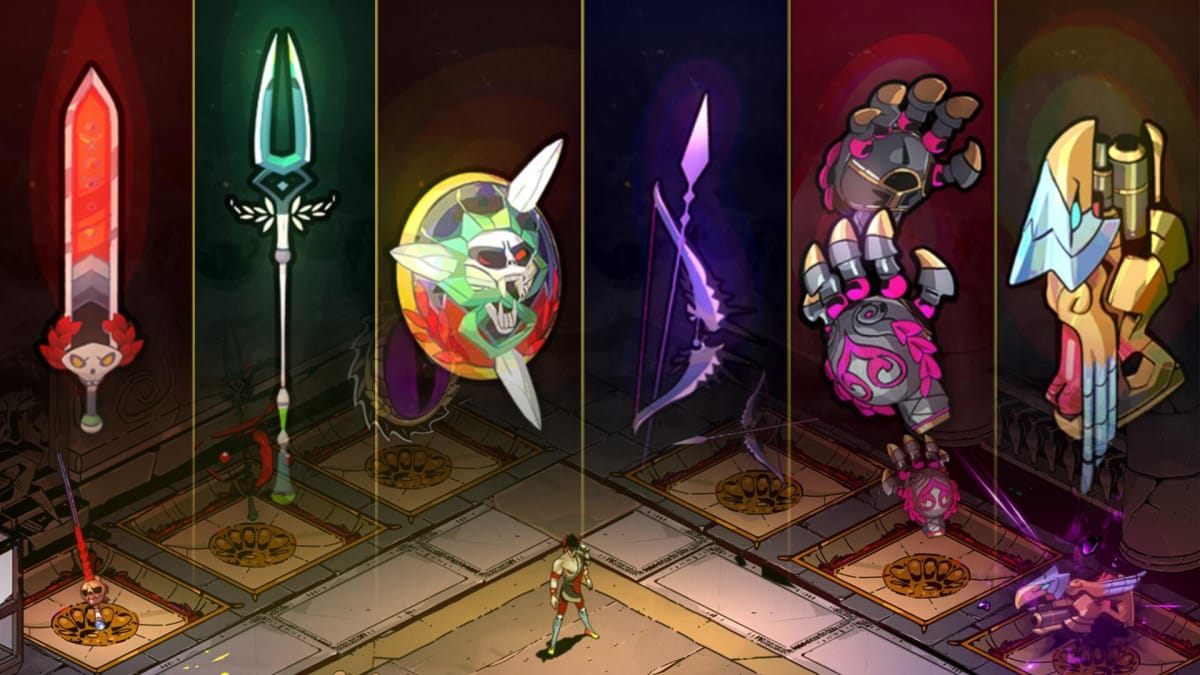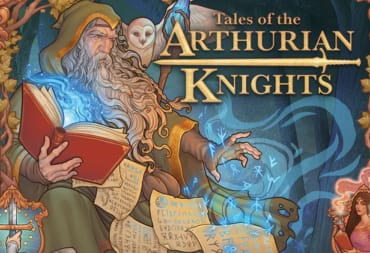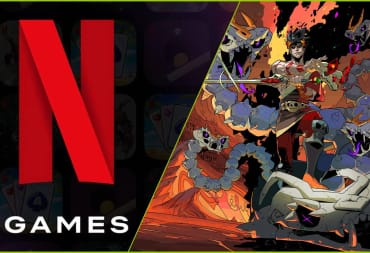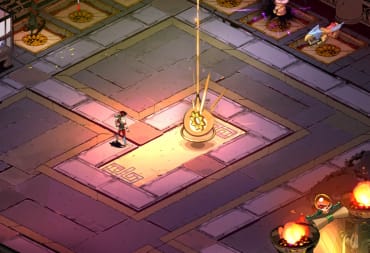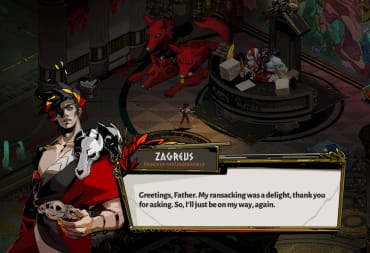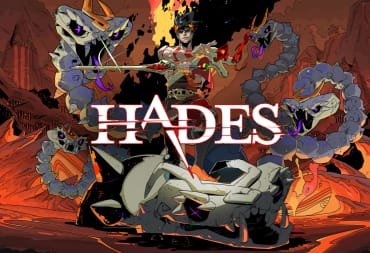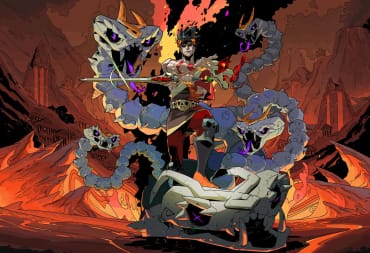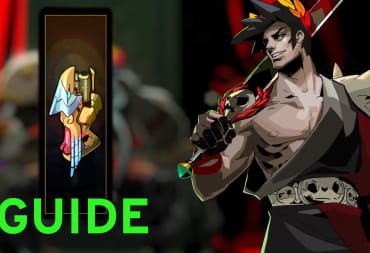Every good hero needs his or her arsenal of weapons, and Zagreus in Supergiant Games’ Hades is no exception. Gifted the weapons by none other than the mythological Achilles, they are the tools you use to break Zagreus out of the Underworld. And, much like everything else in the game, they are steeped in ancient mythology. So, we sat down to take a look at the weapons and see how far back we could trace their mythological origins and inspirations.
Hades - Stygius, the Stygian Blade Origins & Meaning
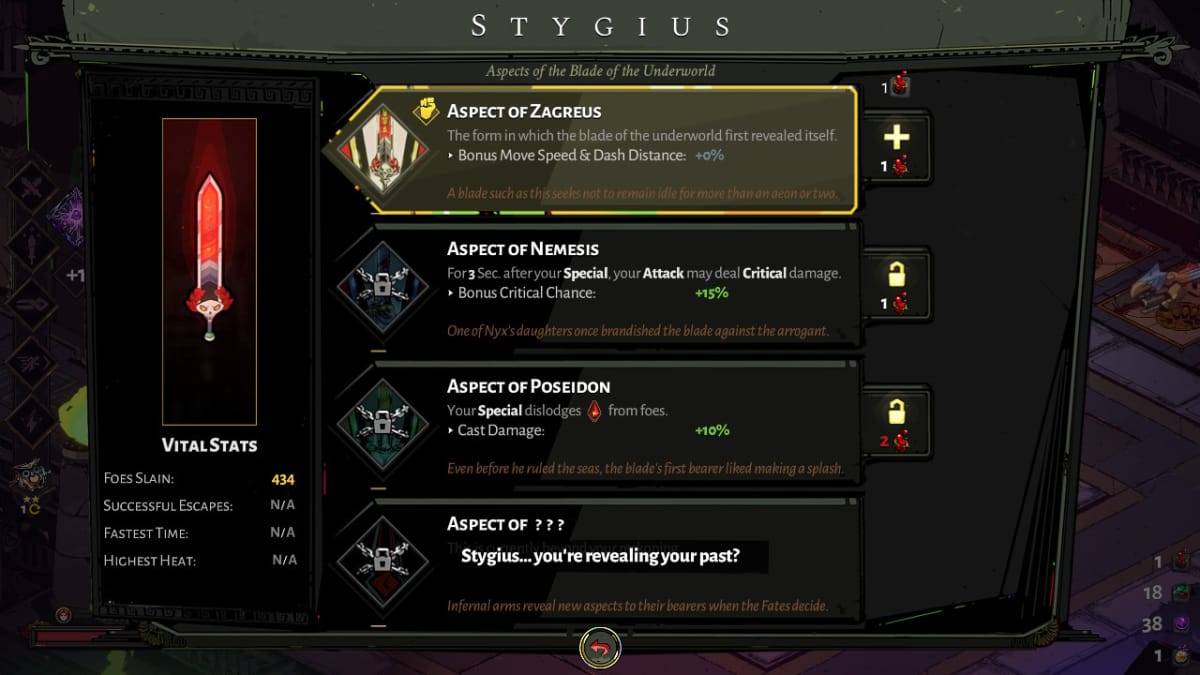
One of the starting weapons of Hades, the adjective Stygian means “of or relating to the River Styx.” The blade’s original wielder in-game was Poseidon, and he used it when the Gods fought the Titans, before he chose to adopt his more famous trident motif. Given that the sword is associated with a River, Poseidon as the initial owner is the clearly logical choice and complements his two brothers’ weapons.
Unfortunately, there aren’t many records of any famous Greek swords and, as cool as it might be, no record of Poseidon having used one. However, a Stygian sword has popped up previously in fiction as Nico’s Stygian iron dagger in the Percy Jackson series.
The aspects of the sword that you can unlock initially are Nemesis and Poseidon. Nemesis, goddess of retribution, deals bonus critical damage attacking after using your Special, and according to the description, she once used the sword against the arrogant of the populace. This is a fitting description and fitting bonus for the deity. Poseidon’s aspect instead dislodges Casts from foes, possibly as some sort of tidal wave metaphor. Or, more likely, just because it sounded cool.
The final, hidden aspect of the sword is the Aspect of Arthur. While the Greeks might not have been fans of famous swords, Arthur, as in King Arthur, owned arguably the most famous sword in the world with Excalibur. Fittingly, this grants the Holy Excalibur move set, which plays on the Christian themes of the Arthurian legends with Hallowed Ground and Nova Smash.
Hades - Varatha, the Eternal Spear Origins & Meaning
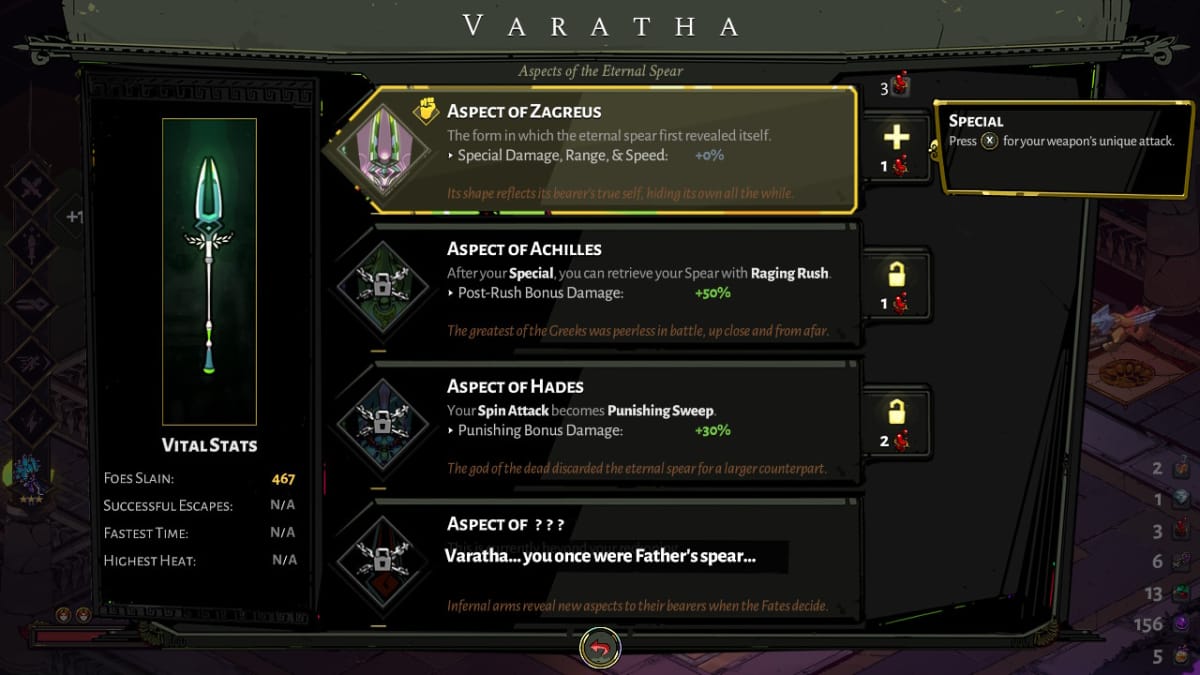
Like its fellow weapon above, Varatha in-game is said to be one of the weapons used by the Gods in the war against the Titans, this one belonging to Hades specifically. Searching through most well-known accounts, there isn’t any record of Hades ever being associated with a spear, but the name Varatha itself is very interesting. In Tamil, it means “do not come,” and the word Varathan means “Outsider.” Considering that Hades is the often banished and neglected black sheep of the family, his weapon being branded a standoffish outsider as well is apt.
Again, there aren’t any tales of Hades having used a spear, however, he is only one of the aspects of the weapon. The other, Achilles, draws on the tales of Achilles’ spear in the Greek war. Though it wasn’t named, he is frequently pictured wielding it in artwork, and according to one story, it was his picking of the spear that convinced Odysseus to ask him to join the Greeks in the Trojan War. For a while, a spear purported to be his was kept in a temple of Athena in Phaselis, Greece.
Achilles’ special bonus to the spear is entitled Raging Rush, fitting for a man known for his turbulent emotions which ultimately got him killed. Hades, on the other hand, allows you to use Punishing Sweep with the spear, also fitting for the god of the dead, meting out punishments in the Underworld for all eternity.
Varatha’s hidden aspect is Guan Yu, a Chinese military general who died in the year 220 and was subsequently deified. He’s a character in the famous Romance of the Three Kingdoms and is shown to be a brave warrior. The spear takes the visual form of a Guandao, a traditional Chinese spear-like weapon said to be invented by Guan Yu himself.
Guan Yu’s specific weapon was called the Green Dragon Crescent Blade in the Romance of the Three Kingdoms, also known as the Frost Fair Blade, which is the name of the move set that Zagreus unlocks with its hidden aspect. One of the moves included is called Serpent Slash, possibly a reference to the Green Dragon.
Hades - Aegis, the Shield of Chaos Origins & Meaning
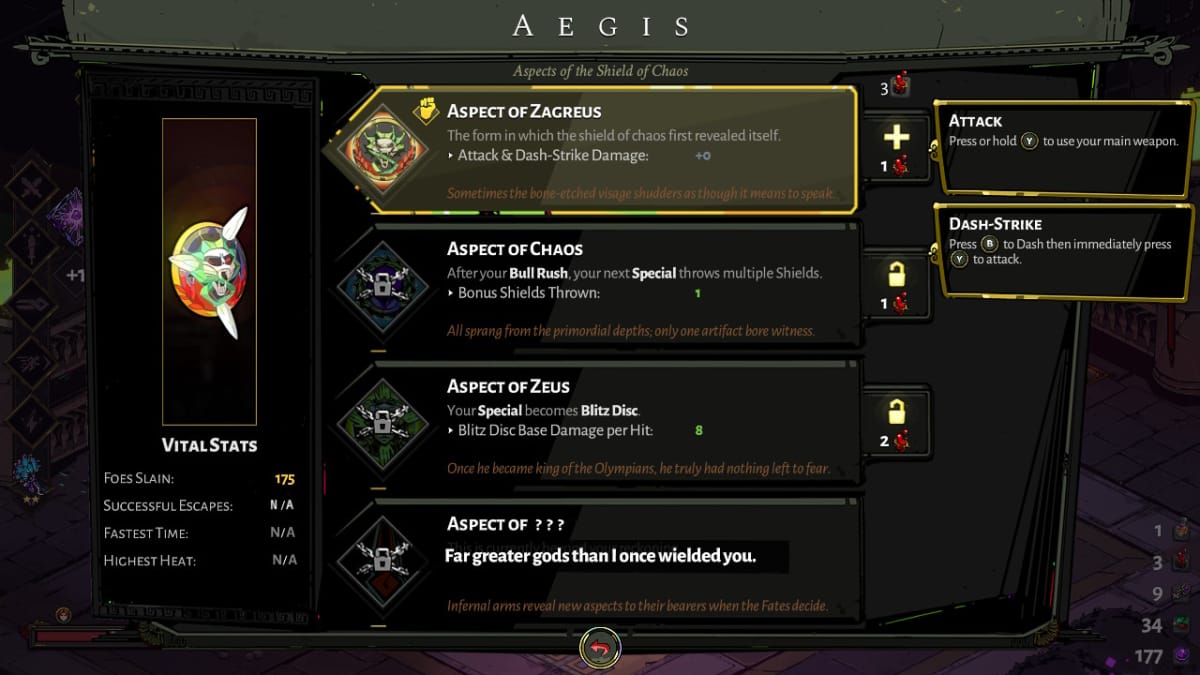
The third weapon of the trifecta of the godly brothers, Aegis was Zeus’s weapon of choice for fighting against the Titans in the war. Unlike the other two weapons, this one does have a basis in myth as Aegis was a shield made of goatskin used by Zeus and occasionally Athena. However, the fictional shield is actually specified by the Codex to be the predecessor to its legendary counterpart.
The shield’s two aspects are Chaos and Zeus. In Chaos’s aspect, the shield looks like a giant eye, and Chaos mentions using the shield to spy on the gods previously. In a rather chaotic manner, it also allows you to throw more shields after a Bull Rush, furthering the confusion on the battlefield.
Zeus’s aspect, on the other hand, forsakes the traditional depiction of a Gorgon on the front which appears on Zagreus’ original form and instead shows a woman’s face surrounded by multiple hands. The special becomes Blitz Disc, referring to Zeus’ aspect of lightning, and moves through foes until called back to Zagreus.
The hidden aspect of Aegis is that of Beowulf, the legendary King of the Geats from Danish folklore and the eponymous poem. While he is often depicted with a shield in artwork, he is more famous for ripping off the arm of the monster Grendel with his bare hands, which would be a bit of a downgrade for Zagreus, all things considered. More likely the shield is meant to represent protection, as each time Beowulf fought a mythical beast, he was doing it to protect others and ultimately lost his life in one such battle.
In Hades, the shield under Beowulf’s aspect looks like two strands of red and gold intertwined and fighting each other, with the head of a dragon on the gold strand, referencing his final foe. The move set used is Naegling’s Board, taking its name from Beowulf’s sword which he used at his final battle that snapped under the pressure he put on it. Fittingly, the special moves of this are Dragon Rush and Heavy Throw.
Hades - Coronacht, The Heart-Seeking Bow Origins & Meaning
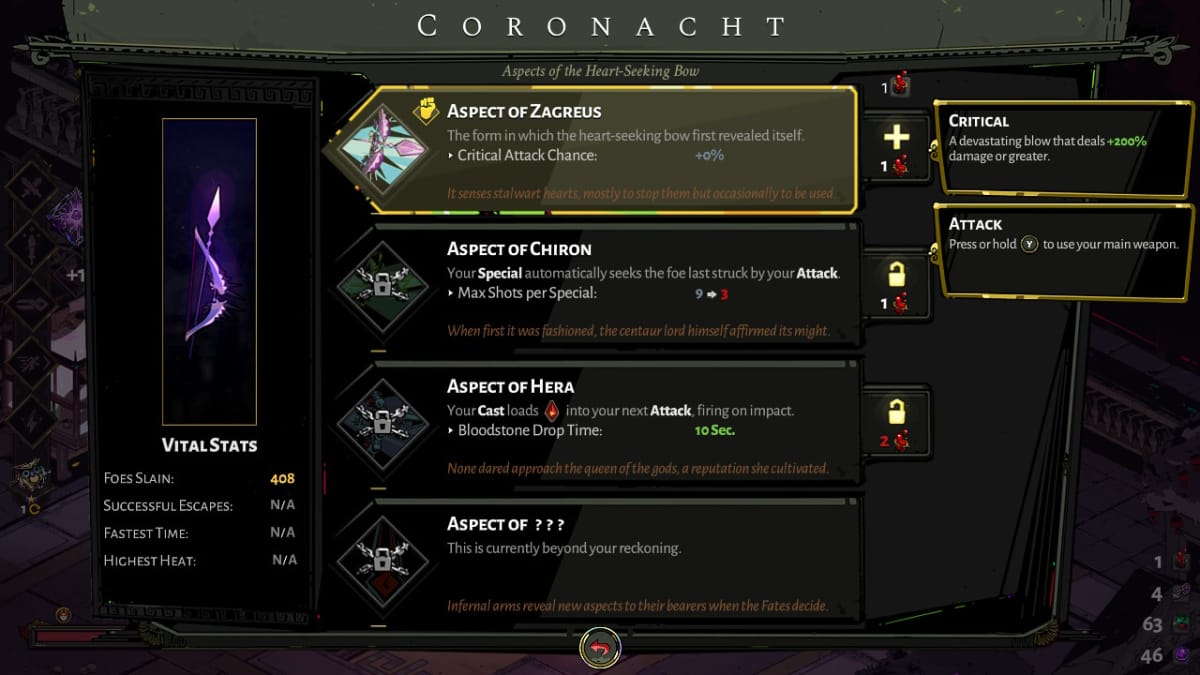
Originally wielded by the Queen of the Gods, Hera, Coronacht was also used to drive back the Titans from the Earth. The name Coronacht is an alternate spelling of the Gaelic word “coronach” which means funeral song. While Hera was picked as the original wielder of Coronacht for the game, she was never actually depicted with a bow in Greek mythology, though fellow Olympians Artemis and Apollo were famous for using such weapons.
Hera and Chiron are the two aspects first unlocked of the bow. Hera’s aspect describes her as unapproachable, relating to the symbolism of a bow as a long range weapon. Chiron, one of the mighty centaurs and teacher of many Greek heroes, was known to be skilled in the use of a bow, and centaurs are usually depicted as skilled marksmen even in modern fiction.
The unlockable aspect of Coronacht is the aspect of Rama, one of the major gods in the Hindu religion. An avatar of the god Vishnu, Rama is a frequently occurring character in the mythos and the central figure in the Sanskrit epic Ramayana. He is strongly associated with the bow and arrow, holding one in each of his hands in many of his depictions. The aspect of Rama unlocks the Celestial Sharanga move set, named for the bow carried by the Hindu god Vishnu.
Hades - Malphon, The Twin Fists
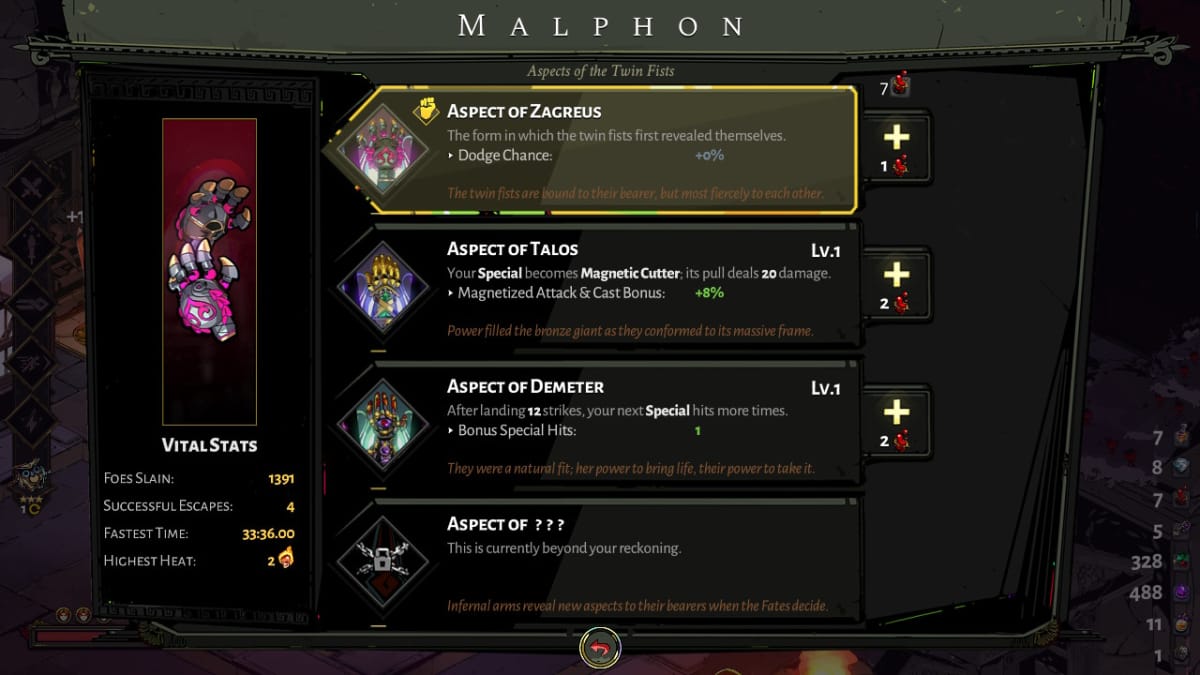
The Twin Fists of Malphon were the weapon that first allowed me to beat Hades, so I have a special place for them in my heart. Originally wielded by the goddess Demeter, the fists encouraged fury and rage, binding to their bearer entirely. Malphon, while not a direct reference to Greek mythology, is roughly translated from Greek roots as “bad voice,” perfect for a weapon that encourages indistinct killing.
In addition to the aspect of Demeter, the other unlockable form of the fists is initially Talos. While Demeter was the goddess of the Earth, known for her strength in tending and dealing with such matters and thus able to bear the fists, Talos, sometimes named Perdix, was the rival to the much more celebrated Daedalus, who was his uncle. And yes, this is the same Talos that the game The Talos Principle is named for.
A genius of engineering, he invented both the saw and the compass and met his demise being pushed off a tower by a jealous Daedalus. However, with such inventive genius, it’s no wonder that his upgrade to Malphon is the Magnetic Cutter, which allows the fists to pull enemies into them.
Interestingly, the hidden aspect of Malphon is the aspect of Gilgamesh, the ancient Sumerian king and epic hero. Gilgamesh, however, was never known for using glove-like weapons in his tales, and the first use of proto-boxing gloves were the caestus used in Ancient Greece and Rome, well after Gilgamesh’s time.
However, Gilgamesh has a story that closely parallels that of Orpheus and Eurydice, tying him into the general underworld mythos. His companion, Enkidu, journeyed to the Underworld and was inadvertently trapped there, only to be visited by Gilgamesh and regale him with tales of the afterlife. With this in mind, The Claws of Enkidu being the unlocked move set for this aspect is quite fitting.
Hades - Exagryph, The Adamant Rail Origins & Meaning
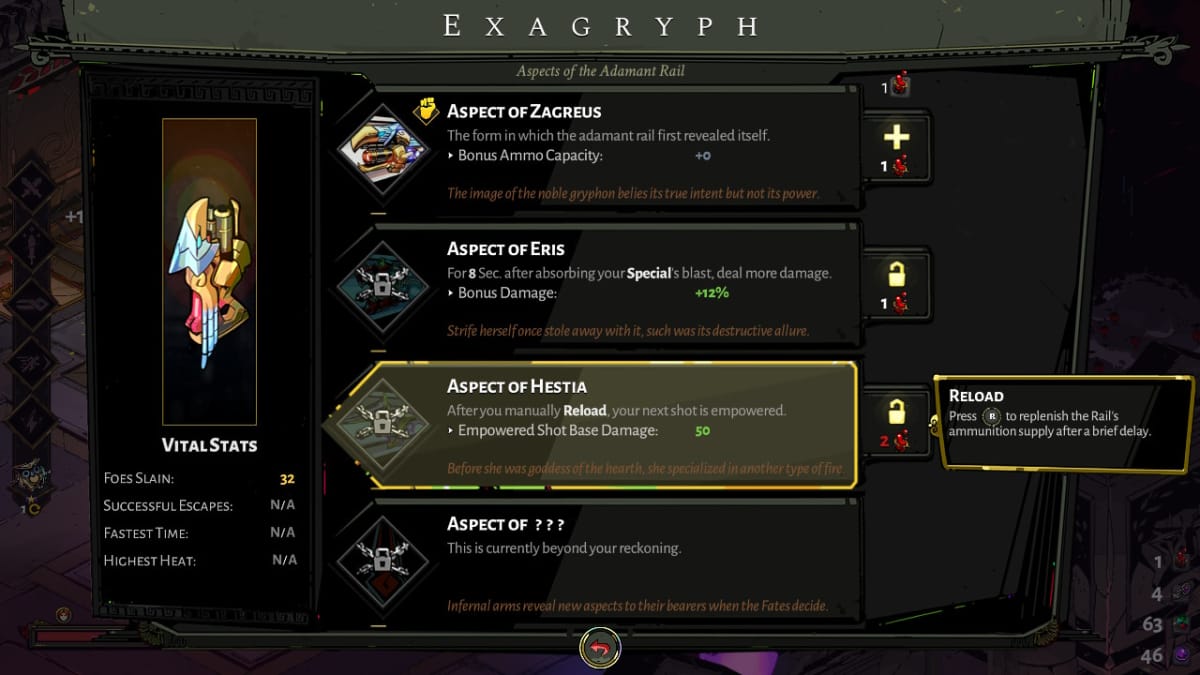
The last and hardest to unlock of the weapons, the Exagryph is alleged by the Codex to be a powerful killing machine wielded by Hestia in the war against the Titans and the likes of which no man has yet thought up. In modern times, it’s a combination gun and grenade launcher.
Exagryph has one of the more odd names of the weapons, the prefix ”exa” referring to the number six, as Hestia was the sixth born of her siblings when Cronus threw them all up. And ”gryph,” of course, refers to the mythical Gryphons, which is also reflected in the weapon’s design. The root of the word gryph also refers to “winged creatures,” which is probably the closest way to say “bullets” in a dead language that never even conceived of such a thing. Rail is a type of gun and, fittingly, Adamant refers to the mythical metal alloy which is the hardest of all substances and “unconquerable.”
The first two unlocked aspects are the original wielder Hestia and Eris, goddess of Chaos and Strife, though not to be confused with Chaos itself. Considering Eris is associated with destruction, particularly with causing the Trojan War, it’s no wonder the game associates her with this weapon and even has her aspect deal more damage after absorbing the blast from the Special, the opposite of what is expected. Hestia, on the other hand, is the goddess of home and hearth and empowers shots after manual reloads with her aspect.
The hidden aspect of the Exagryph, like its fellow Infernal Arms, ties into an outside mythology, this one to Christianity with the aspect of Lucifer, the devil himself. While he’s not directly associated with guns, being the King of Hell ties in nicely with the Underworld theme, and his Igneus Eden move set translates roughly to Fiery Paradise or Garden. With this in mind, it’s no surprise that the weapon’s special attack under his aspect is the mythical Hellfire.
Are you enjoying your time with Hades? Looking for some extra tips to score some wins? Check out our weapon guides below for an extra edge.
Have a tip, or want to point out something we missed? Leave a Comment or e-mail us at tips@techraptor.net
